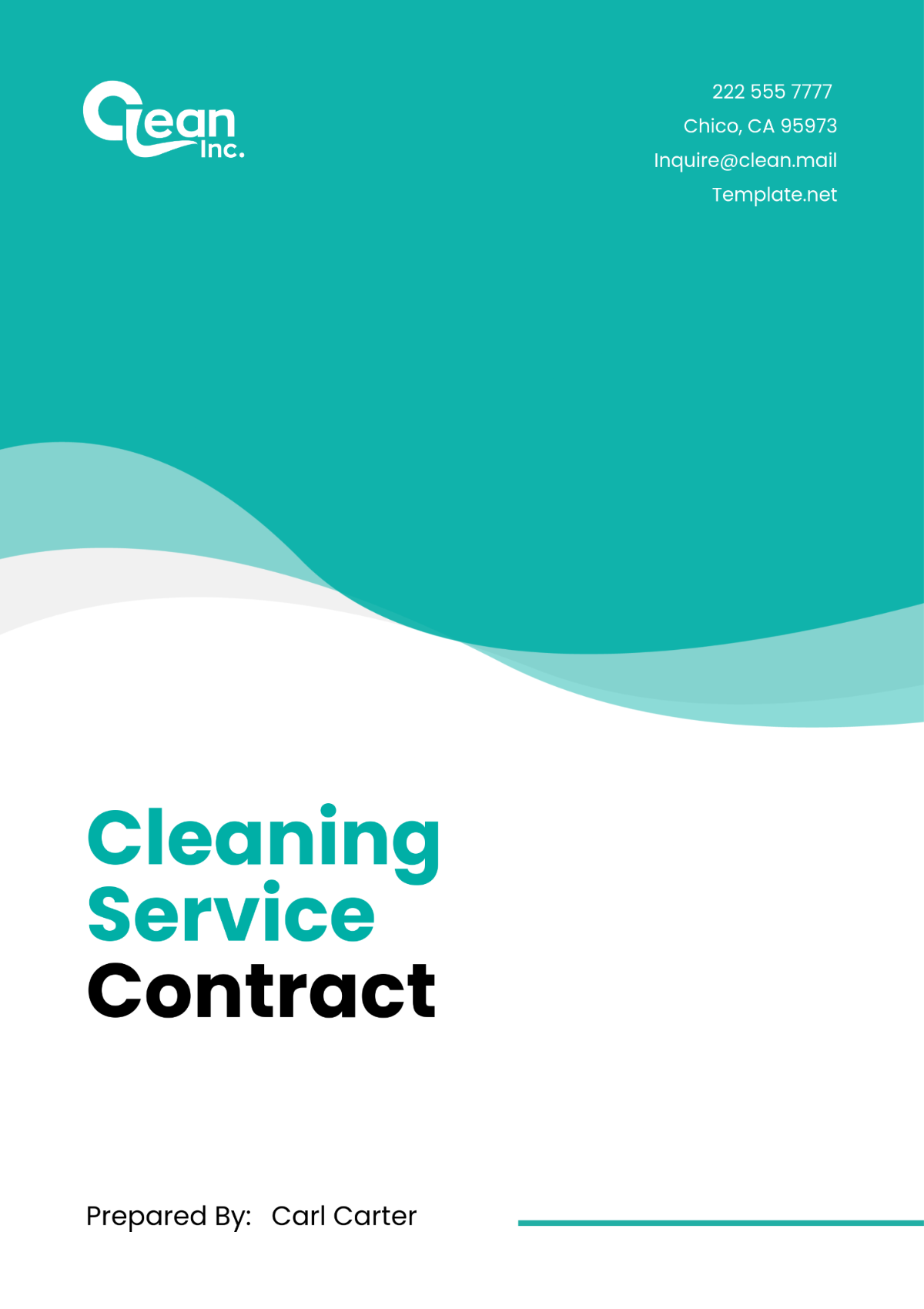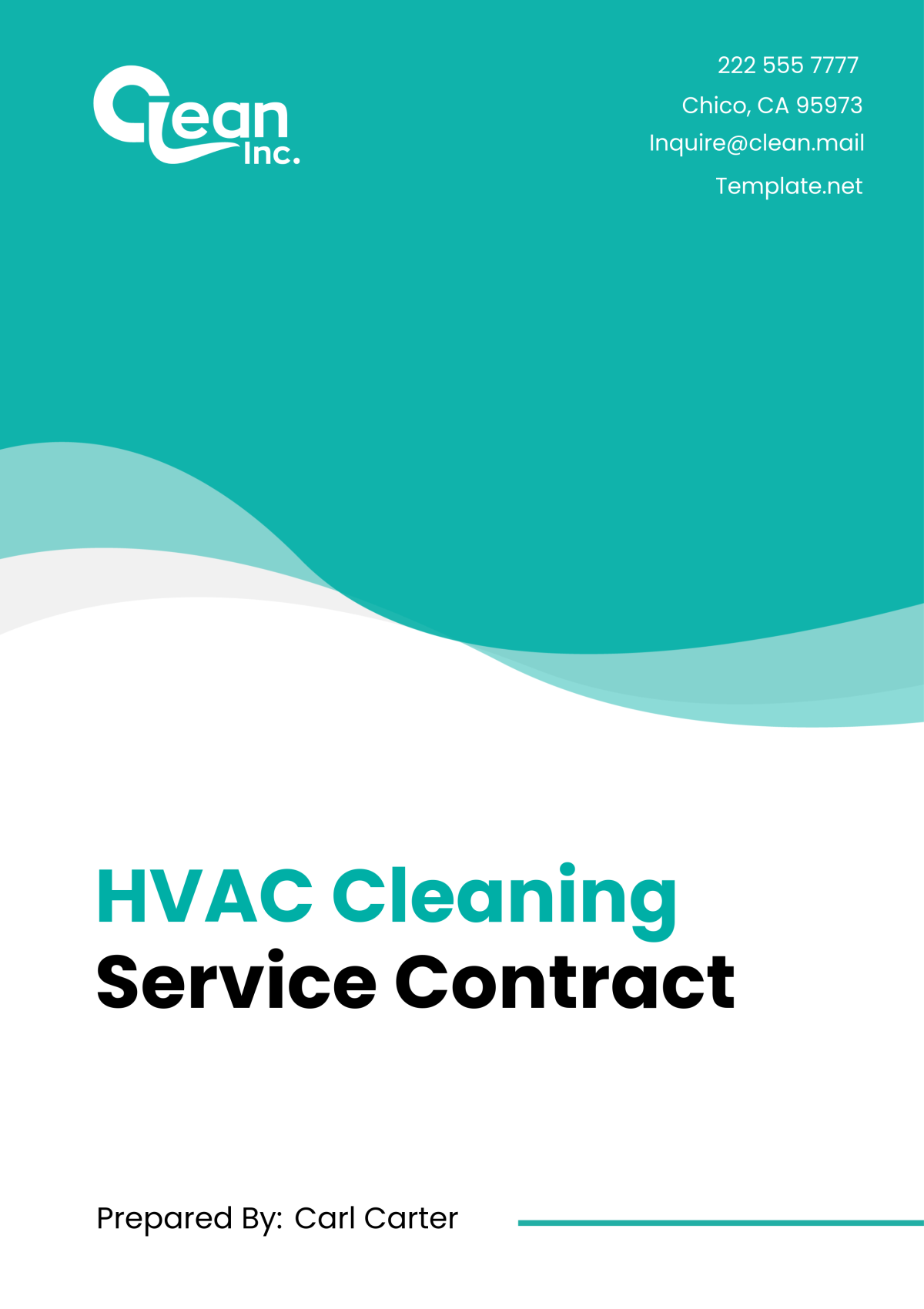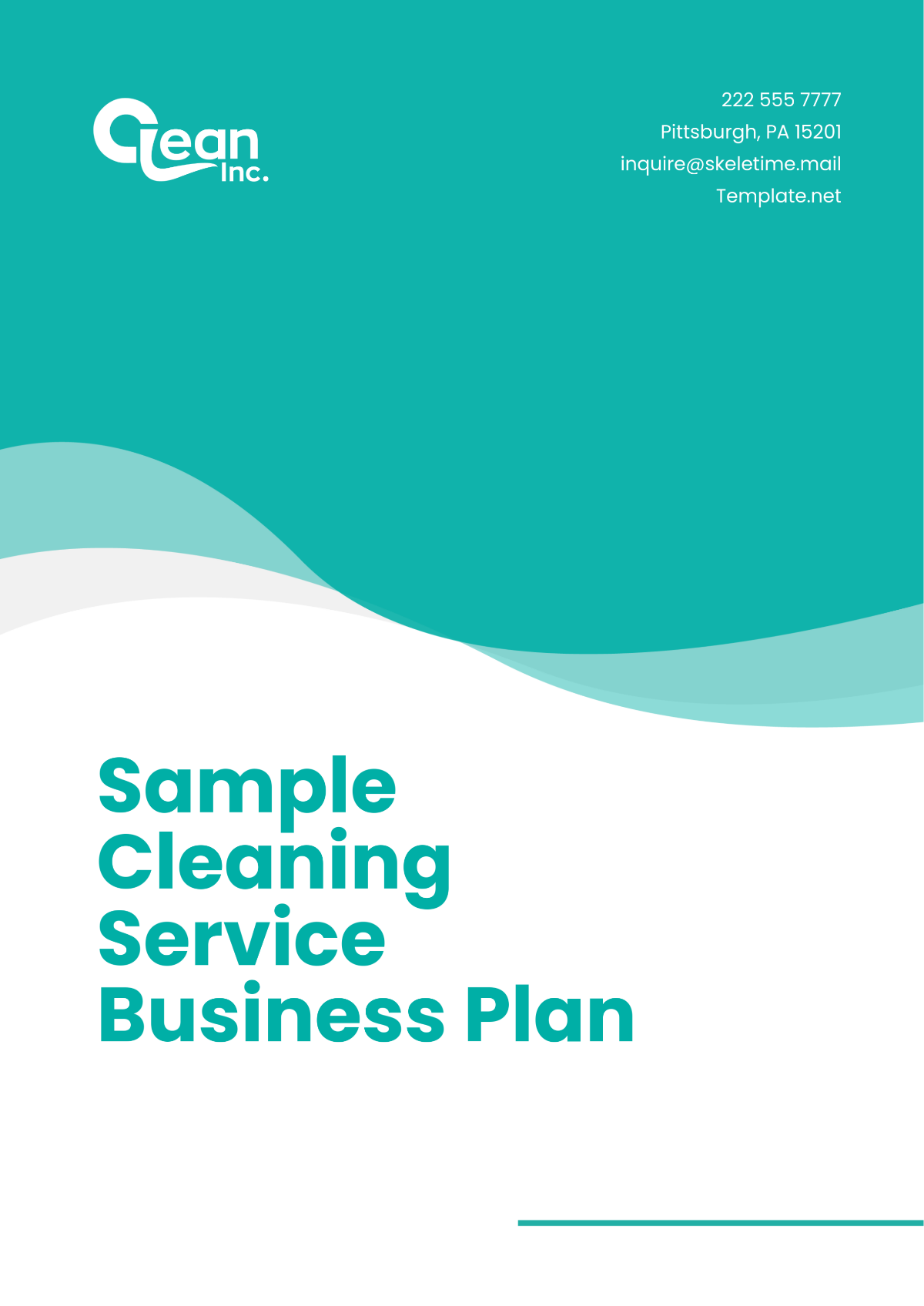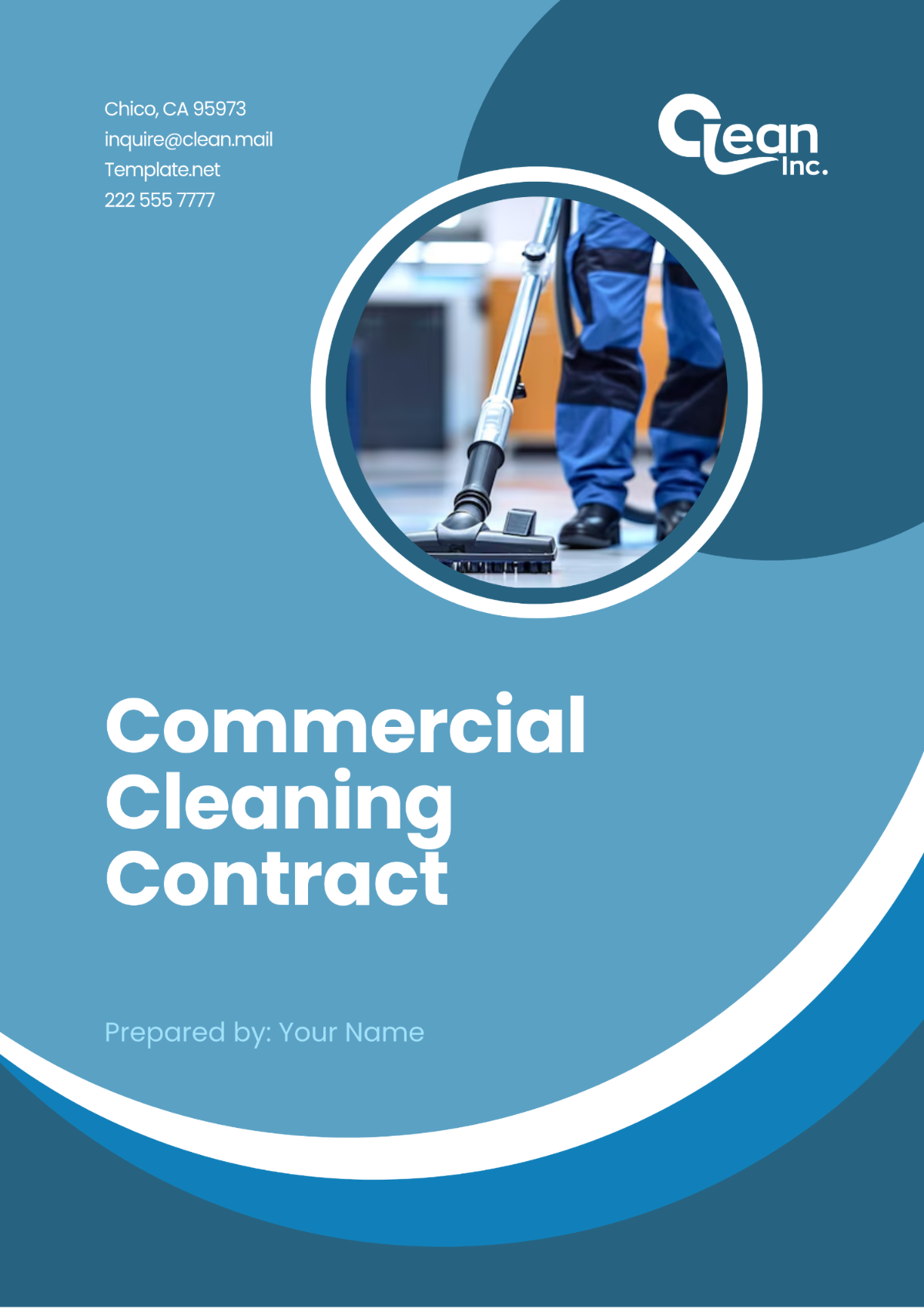Cleaning Services Risk Management Guide
A. Introduction
Purpose of the Guide: The primary goal of this Risk Management Guide is to provide [Your Company Name] and its employees with a comprehensive framework to identify, assess, manage, and minimize the risks associated with the cleaning services industry. Effective risk management is crucial not only for the safety and well-being of our staff and clients but also for the sustainability and growth of our business.
Scope: This guide covers a wide range of cleaning services provided by [Your Company Name], including residential cleaning, commercial office cleaning, specialized cleaning services (such as medical facilities, industrial sites, and hospitality), and environmental sanitation.
Objectives:
To ensure a safe working environment for all employees and clients.
To protect [Your Company Name] from financial liabilities and enhance operational efficiency.
To uphold the reputation of [Your Company Name] as a responsible and reliable service provider.
To comply with all relevant laws, regulations, and industry standards.
B. Identifying Risks
The first step in effective risk management is identifying potential risks. Below is a categorization of risks that [Your Company Name] may encounter:
Physical Risks
Risk | Description |
|---|---|
Injuries to Staff: | Cuts, slips, falls, and muscle strains from handling equipment or performing cleaning tasks. |
Damages to Client Property: | Accidental damage to client possessions or property during cleaning services. |
Chemical Risks
Risk | Description |
|---|---|
Handling and Exposure: | Skin or respiratory problems resulting from direct contact with or inhalation of harmful chemicals. |
Biological Risks
Risk | Description |
|---|---|
Exposure to Harmful Biological Agents: | Contracting infectious diseases while cleaning contaminated surfaces or waste. |
Financial Risks
Risk | Description |
|---|---|
Unforeseen Expenses: | Costs incurred from accidents, equipment damage, or legal liabilities. |
Loss of Business: | Revenue loss due to negative reputation, client dissatisfaction, or non-compliance with regulations. |
Reputational Risks
Risk | Description |
|---|---|
Negative Customer Feedback: | Impact on future business due to poor service quality or customer experience. |
Legal Issues: | Legal challenges affecting the company's image and customer trust. |
Environmental Risks
Risk | Description |
|---|---|
Impact of Cleaning Agents: | Pollution and harm to ecosystems resulting from the use of non-environmentally friendly cleaning products. |
C. Assessing and Analyzing Risks
In the realm of cleaning services, where both the unpredictability of tasks and the variety of environments can present numerous risks, [Your Company Name] adopts a proactive stance. Recognizing and analyzing these risks is not only about safeguarding assets but also about ensuring the well-being of our employees and clients. Our systematic approach encompasses several techniques aimed at identifying the nuances of potential dangers, assessing their impact, and formulating strategies to minimize their occurrence.
Risk Assessment Techniques
Walkthrough Audits:
Purpose and Procedure: These audits involve physical inspections of work sites by safety officers or management teams. The goal is to visually assess the environment, identify potential hazards (such as wet floors, improperly stored chemicals, or unsafe working practices), and evaluate the effectiveness of existing safety measures.
Frequency and Reporting: Conducted monthly or upon any significant change in the workplace or work practices, the findings from these audits are documented in detailed reports. These reports highlight areas of concern, recommend corrective actions, and are reviewed in safety meetings for further action.
Employee Feedback:
Mechanism for Reporting: [Your Company Name] has established multiple channels for employees to report hazards, incidents, or near-misses. These include an anonymous online reporting system, suggestion boxes placed in common areas, and direct communication with supervisors.
Incentives and Follow-up: To encourage active participation, the company recognizes and rewards employees who consistently report potential risks. All reports are taken seriously, with immediate investigations launched to assess and mitigate reported risks. Feedback loops ensure that reporting employees are informed about the actions taken in response to their reports.
Historical Incident Review:
Analysis Process: This involves a detailed examination of past incidents, including accidents, injuries, property damage, and near-misses. The objective is to identify any trends or recurring issues that may indicate underlying risks not adequately addressed.
Learning and Adaptation: Findings from these reviews are used to update training materials, revise operational procedures, and improve safety measures. Lessons learned are shared with all employees during training sessions or safety meetings, fostering a culture of continuous learning and adaptation.
Prioritization of Risks
Upon identifying and assessing risks, [Your Company Name] prioritizes them using a risk matrix that considers both the likelihood of occurrence and the potential impact. This prioritization helps in allocating resources and efforts more efficiently, focusing on high-risk areas to reduce the probability of incidents and minimize their consequences.
Continuous Improvement
The assessment and analysis of risks is not a one-time activity but a continuous process. [Your Company Name] is committed to regularly updating its risk management practices based on new insights, technological advancements, regulatory changes, and feedback from employees and clients. This dynamic approach ensures that the company not only remains compliant with industry standards but also fosters a safe and healthy working environment for its employees and provides high-quality services to its clients.
By employing these rigorous risk assessment techniques, [Your Company Name] demonstrates its dedication to excellence, safety, and the well-being of all stakeholders involved in its operations. Through constant vigilance and a commitment to improvement, the company aims to not only mitigate risks but also to set new standards in the cleaning services industry.
D. Risk Matrix
A Risk Matrix is used to categorize risks based on their likelihood and impact. This helps in prioritizing risk management efforts.
Risk Type | Likelihood | Impact | Priority Level |
|---|---|---|---|
Injuries to Staff | High | High | Critical |
Damages to Property | Medium | High | High |
Chemical Exposure | High | High | Critical |
Biological Exposure | Low | High | Medium |
Financial Losses | Medium | High | High |
Negative Feedback | Medium | High | High |
Environmental Impact | Low | Medium | Medium |
E. Legal and Compliance Risks
In an industry where the health and safety of both employees and clients are paramount, [Your Company Name] rigorously adheres to a comprehensive suite of regulations and guidelines. These frameworks are designed to safeguard against potential legal and compliance risks that could impact our operations, reputation, and financial stability.
Occupational Safety and Health Administration (OSHA) Guidelines:
Worker Safety: OSHA guidelines are at the forefront of our compliance strategy, ensuring that workplace conditions meet the standards for health and safety. This includes implementing hazard communication standards, ensuring the proper use of personal protective equipment (PPE), and adhering to specific safety protocols for cleaning and sanitizing.
Training and Documentation: Regular training sessions are conducted to familiarize our workforce with OSHA regulations, emphasizing their rights to a safe workplace. Comprehensive records of injuries, training, and compliance checks are meticulously maintained as part of our commitment to transparency and accountability.
Environmental Protection Agency (EPA) Regulations:
Sustainable Practices: The EPA's regulations guide our selection and use of cleaning chemicals, ensuring they are effective yet pose minimal risk to the environment. We prioritize the use of EPA-registered disinfectants, especially in areas requiring stringent sanitation, and integrate eco-friendly cleaning practices wherever possible.
Waste Management: Compliance with EPA regulations extends to our waste management practices, where we emphasize the proper disposal of hazardous and non-hazardous waste. This not only protects the environment but also aligns with our corporate sustainability goals.
Local and State Health Regulations:
Customized Compliance: Recognizing that local and state regulations can vary widely, [Your Company Name] takes a tailored approach to compliance. Our legal team regularly reviews and updates our policies and procedures to align with the latest local health department standards, ensuring that our services meet or exceed the specific requirements of each jurisdiction we operate in.
Community Health and Safety: Engagement with local health departments and community organizations further reinforces our commitment to public health. Through this collaboration, we stay informed about emerging health concerns and adjust our cleaning protocols accordingly to address these risks effectively.
Proactive Legal Risk Management
[Your Company Name]'s approach to managing legal and compliance risks is proactive and forward-thinking. By staying abreast of changes in regulations, engaging in continuous employee training, and fostering partnerships with environmental and health agencies, we not only ensure compliance but also position ourselves as leaders in promoting health, safety, and environmental stewardship within the cleaning industry.
F. Implementing Risk Control Measures
Physical and Chemical Safety
Training: Comprehensive training programs for all employees on safe work practices, proper use of Personal Protective Equipment (PPE), and correct handling and storage of chemicals.
PPE: Providing appropriate PPE such as gloves, goggles, and masks to employees, ensuring their safety during cleaning operations.
Biological Safety Measures
Hygiene Practices: Implementing strict hygiene practices, including frequent handwashing, use of hand sanitizers, and wearing protective clothing.
Proper Waste Disposal: Ensuring biological waste is correctly disposed of in accordance with health and safety regulations.
Financial Management Strategies
Insurance: Maintaining comprehensive insurance coverage, including liability insurance, workers’ compensation, and property insurance, to protect against potential financial risks.
Emergency Funds: Establishing emergency funds to cover unforeseen expenses, ensuring financial stability.
Reputation Management
Customer Service Excellence: Prioritizing high-quality service and customer satisfaction to build a positive reputation.
Handling Negative Feedback: Establishing protocols for promptly addressing and effectively managing customer complaints and negative feedback, turning dissatisfied customers into satisfied ones.
Environmental Protection Measures
Eco-friendly Products: Choosing environmentally friendly cleaning products that reduce harm to the ecosystem.
Waste Reduction and Recycling: Implementing practices for reducing waste and promoting recycling among employees and clients.
G. Training and Communication
Staff Training Programs: At [Your Company Name], we believe in empowering our employees with knowledge and skills for their safety and the safety of our clients. Our training programs are comprehensive, covering:
Safety Protocols and Emergency Response: Employees undergo rigorous training in handling emergencies, such as chemical spills, fires, and medical emergencies, with regular drills to ensure preparedness.
Risk Identification and Reporting: We foster a proactive culture where employees are trained to recognize and report potential hazards. This training includes practical exercises and scenario-based learning to enhance their observation and reporting skills.
Communication Plan: Effective communication is the cornerstone of our risk management strategy. Our plan includes:
Reporting Procedures: Clear and concise guidelines are provided for reporting hazards, incidents, and near misses, emphasizing the importance of timely communication.
Emergency Contacts: A readily accessible list of emergency contacts, including immediate supervisors, local emergency services, and health departments, is distributed to all employees.
H. Monitoring and Review
Regular Audits: To ensure the effectiveness of our risk management practices, [Your Company Name] conducts regular safety audits and risk assessments. These audits serve as a tool for continuous improvement, helping us to identify new risks and refine our strategies.
Incident Reporting and Investigation:
Incident Log: We maintain a comprehensive log of all incidents, including near misses, which is crucial for tracking trends and areas for improvement.
Investigation Process: A structured investigation process is in place to delve into the root causes of incidents and develop actionable insights for preventing recurrence.
I. Continuous Improvement
Learning from Incidents: Each incident is an opportunity for learning. By analyzing these situations, we aim to strengthen our risk management strategies and prevent future occurrences.
Staying Informed: [Your Company Name] is committed to staying ahead of industry trends, new regulations, and best practices in risk management, ensuring our practices are not only compliant but also exemplify industry-leading standards.
J. Emergency Preparedness and Response
Emergency Plans: Detailed emergency response plans are developed for a variety of scenarios, ensuring readiness for swift and effective action. These plans include evacuation procedures and protocols for first aid and medical emergencies, tailored to the specific needs of our operation sites.
First Aid and Medical Emergency Response: Selected employees receive training in first aid and CPR, ensuring that each team has individuals capable of providing immediate care. Our protocols for medical emergencies are designed to ensure a quick and effective response, prioritizing the health and safety of everyone involved.
K. Insurance and Financial Protection
Types of Insurance: To safeguard against unforeseen events, [Your Company Name] has a robust insurance portfolio that includes liability insurance, workers’ compensation, and property insurance. These policies are regularly reviewed and updated to reflect the changing nature of our business and the environments we operate in.
Risk Transfer Strategies: Through carefully crafted contracts and agreements, we effectively manage and transfer risks. This ensures that all parties are aware of their responsibilities, reducing potential legal and financial exposures.
L. Resources and Tools
To support the implementation of this guide, [Your Company Name] provides:
Checklists and Templates: For risk assessments, safety audits, and emergency planning.
Regulatory Guidelines and Standards: Latest information on compliance requirements.
Professional Support: Access to legal, insurance, and risk management consultation services.
M. Case Study: Quick Response to a Chemical Spill
Background: During a routine cleaning at a client's office, a [Your Company Name] employee accidentally tipped over a container of cleaning solvent, causing a spill and minor skin exposure.
Immediate Actions:
The employee followed our emergency protocol by evacuating the area and using an emergency shower to rinse off the chemical.
The spill was promptly contained and cleaned up with proper safety equipment.
Investigation Findings:
The investigation revealed the container wasn’t properly secured, a violation of our safety procedures.
Corrective Actions:
Conducted refresher training for all employees on chemical handling and storage.
Implemented stricter supervision and regular equipment audits.
Outcome:
The quick action taken by the employee and adherence to emergency protocols prevented serious injuries and highlighted the effectiveness of our training.
Post-incident, there was improved adherence to safety protocols, demonstrating enhanced safety awareness among employees.
Conclusion: This incident reinforced the value of [Your Company Name]'s rigorous safety training and emergency preparedness, underscoring our commitment to employee and client safety.
N. Conclusion
Effective risk management is integral to the success and sustainability of [Your Company Name]. By adhering to the guidelines presented in this document, we not only ensure the safety and well-being of our employees and clients but also protect and enhance our business reputation and financial stability. [Your Company Name] is committed to continuous improvement and encourages all team members to actively participate in our risk management efforts.

















































